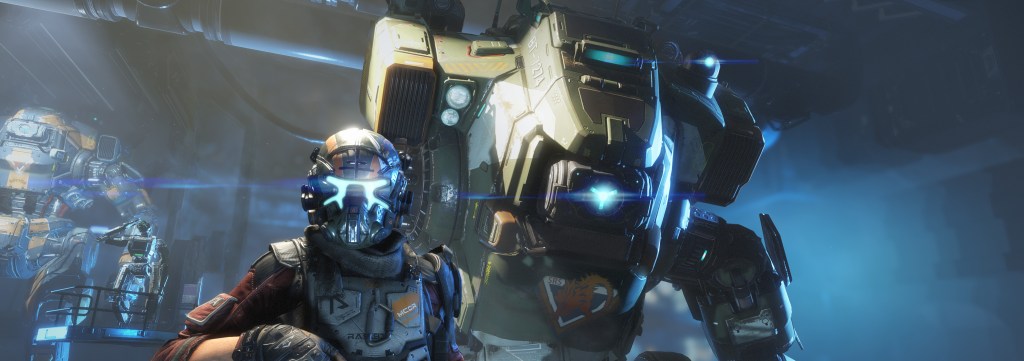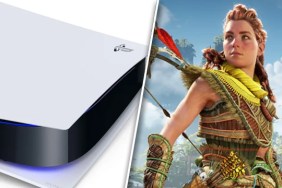Despite the first Titanfall living up to its elevator pitch of “What if you could play Call of Duty with echs?”, the game lacked one crucial feature: a proper single-player campaign. Cutscenes tacked on to the beginning and the end of regular multiplayer matches felt like an afterthought. Here was a fully-realized world with almost no context.
Why were the Militia fighting against the IMC (Interstellar Manufacturing Corporation)? What was the purpose of the Titans, other than having the best entrance into the battlefield since the mechs in Neon Genesis Evangelion? Thankfully, the team at Respawn must have read my mind, because the hands-off demo we were given last week at a private media event gave context to the increasingly intriguing world of Titanfall.
Jack Cooper, our protagonist for Titanfall 2, is a soldier for the Militia and about as qualified to pilot a Titan as Luke Skywalker was to pilot an X-Wing for the very first time. Jack wakes up after crash-landing on a planet surrounded by the planet’s local predators in what looks to be just in time for breakfast. They look like the rejected specimens of a Jurassic Park exhibit, four-legged like a stegosaurus with the intimidating flaps of a dilophosaurus (the “spitter” one).
But before they could help themselves to a Cooper omelette, the deadly predators are Swiss-cheesed by the gunfire of a collapsed Titan. As Cooper runs to meet his savior, his mentor comes tumbling out of the damaged mech. With death filling out the paperwork, Cooper’s mentor uses his last words to hand control over to Cooper, kicking off the story of a man and his deadly robot.
The hands-off demo begins with Cooper returning to the crash site in search of a battery to power up his newly acquired Titan. As he makes his way up the canyon, a dialogue opens up between the Titan A.I. and his new pilot. Directional prompts allow for choices in how the dialogue plays out as Cooper hops, skips, and double-jumps his way through the quiet canyon.
The team at Respawn is working hard to make a meaningful single-player campaign that stands out in the crowded marketplace of set piece-heavy AAA shooters. Most of the demo we saw was light on action, instead focusing on the developing relationship between Cooper and BT. The team emphasized that they wanted to explore this pilot-Titan dynamic based on player feedback. Many players of the original felt like they had developed a bond with their Titan (despite the Titans themselves being rather disposable).
Telling a meaningful story doesn’t mean the action takes a backseat, however. Those who played the original can attest to the nimble-yet-deadly Pilot's arsenal, all of which we saw on violent display. Cooper uses his cloaking device to stealthily take down some IMC soldiers guarding the crash site. Spotted, he wall-runs his way up to higher ground, kicking and shooting IMC grunts like Neo in military fatigues. Far from the take-cover-and-iron-sights-your-way-out strategy of other modern shooters (looking at you, Call of Duty), combat requires constant movement. "Dynamic" was the word I scribbled down on my notepad as I watched. None of the excitement of the multiplayer was lost in translation.
The second half of our demo involved Cooper and his vanguard-class Titan climbing a mountain in order to reach a beacon. And wouldn’t you know it?, the beacon is down and the only way to bring it back up is with a device called the Arc Tool. Cooper descends deep into an underground facility run entirely by machines. Hopping back and forth between walls of exposed electrical current, Cooper eventually finds himself inside of a giant silo. With the gap too large to cross, Cooper trust falls into the giant fan spinning underneath, letting the rising air current carry him upward to his destination.
Tired as the mechanic may be, it was nice to see pilot mobility still play heavily into the single-player campaign. Cooper finally finds the Arc Tool in the hands of a busy humanoid robot. Hurried but not heartless, he rips it from the robot’s hand. Unable to speak, the robot displays its dismay with a sad-face emoticon on its chest monitor, garnering a few chuckles from the audience.

Later, Arc Tool in hand, we see a humorous exchange between Cooper and the deadpan Titan A.I. as it calculates Cooper’s chances of successfully being thrown across a large distance to reach the beacon (sixty-eight percent, if you’re wondering). These moments of levity help inject some personality into a franchise that could have easily settled for “Call of Duty with mechs, again.” When I asked the developers about where this humor came from, they explained that after spending years on Call of Duty, this afforded them a chance to take things less seriously. After all, this is a game about summoning giant bipedal tanks from the sky.
Toward the end of our single-player highlight reel, a mercenary pilot appears to challenge Cooper and his Titan, with the mercenary sporting a thick Austrian accent that was not unlike a certain former California governor. It was so over-the-top and hokey that, had it not been so earnest, it would have elicited a groan. Titanfall 2 looks to be having fun with itself, and if what I saw is any indication, that fun will carry over to the masses come October.
Overall, I was very impressed with what the team at Respawn had to show us. The campaign could have easily been a showcase of set pieces driven by a forgettable through line. Instead, they are using this sequel as an opportunity to explore the world that makes these giant walking death machines believable. Titanfall 2 release for PC, Xbox One, and PlayStation 4 on October 28, 2016.
(Disclaimer: This preview is based on a press event hosted and paid for by EA. The demo was hands-off, but the cookies were definitely hands-on.)







